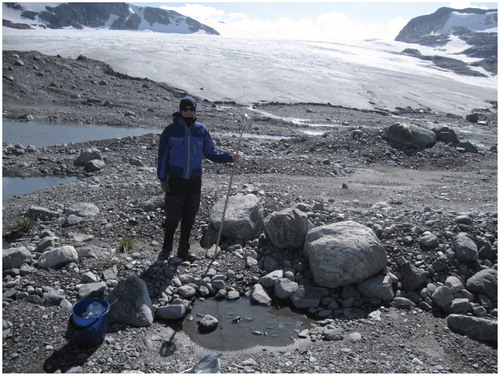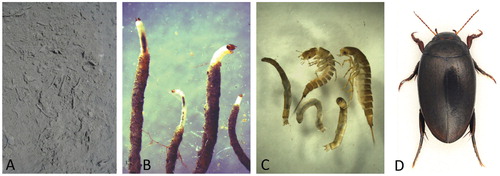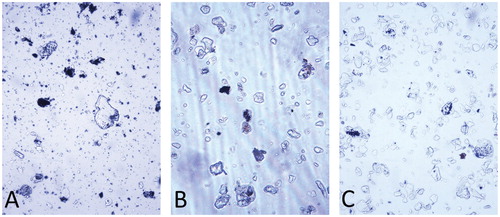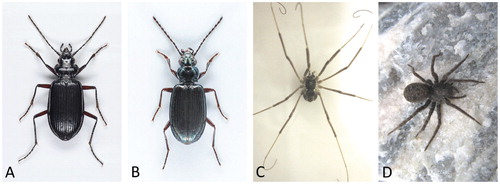Figures & data
FIGURE 1. An 8-yr-old pond, less than 1 m2 in area and only a few centimeters deep. The soft bottom sediments were rich in chironomid larvae that assimilated ancient carbon.

FIGURE 2. Pond-living invertebrates containing ancient carbon released by the glacier. (A) The sediment surface of the pond in , showing the numerous tubes in which chironomid larvae are living. (B) Chironomid larvae partly freed from their tubes. (C) Two predacious larvae of the diving beetle Agabus bipustulatus, together with three cylindrical larvae of Tipulidae (Diptera). (D) Adult predacious diving beetle, Agabus bipustulatus.

TABLE 1 Conventional radiocarbon age and δ13C values of invertebrates and substrates in the foreland of the Hardangerjøkulen glacier, southern Norway. For modern age, percent modern carbon (pMC) is given. River, ponds, and terrestrial habitats are distinguished, and animals are grouped according to trophic level. For river, distance from glacier outlet is along the water course. Data with a star are previously unpublished.
Table


